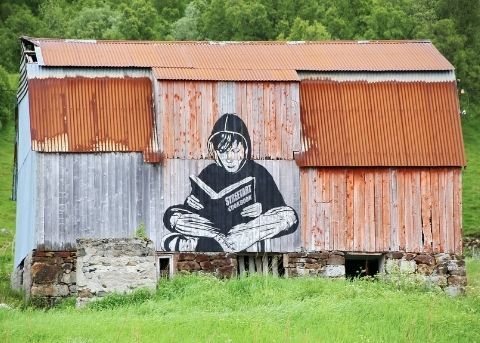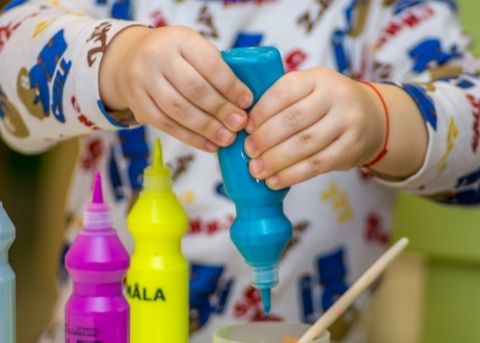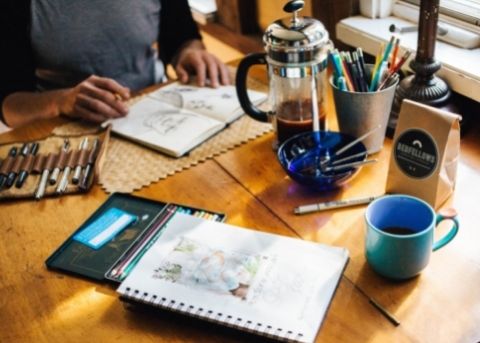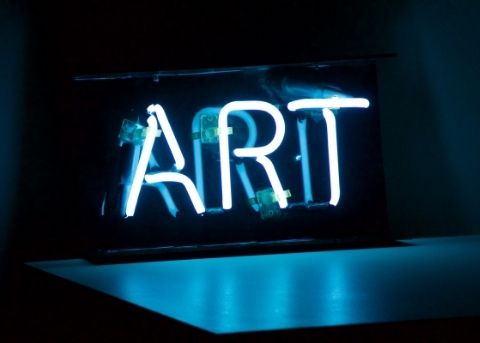Are we thinking broadly enough about how literacy skills are taught? Literacy-based instruction is an important aspect of teaching all subjects, including Art. And when we consider the diversity in a cohort’s skills and interests, the multimodal nature of art provides a rich platform from which we can build students’ literacy skills.
“Every student can learn and succeed, but not on the same day in the same way.”
George Evans
The argument for differentiation and personalised learning strategies is everywhere in the education system these days—in staff rooms, classrooms, at the school gate, and beyond. To accept students learn in a variety of ways at different paces means we must support a broader conceptualisation of how literacy skills are built and developed. Let’s look specifically at Visual Art.

The role of teaching literacy through Art
When reviewing the role of Art in teaching literacy, there is an evolution that takes place as a student progresses through primary and secondary school. Between fundamental visual art concepts, through to complex studies and formulation of meaning-making that applies to the world beyond school, Art is far more than a decorative addition to teaching literacy to our students.
In following the connection between art and teaching literacy, teachers have reported that their students show a greater ability to remember the content being taught when they are able to express a deeper understanding through the creation of their own art.
“The arts have a unique relationship with literacy that no other disciplinary area does. This relationship is inherently a positive conversational one.”
Georgina Barton
This paper from the International Journal of Education & the Arts offers three key ways teachers can engage their students in developing literacy skills through art studies: critique, evaluate, and apply knowledge.
Let’s explore these further:
- Critique – develop the ability to describe an artwork’s form using appropriate terminology or vocabulary, and understand one’s reaction to it.
- Evaluate – build confidence in assessing and identifying the artist’s intent, as well as reflect on the derived meaning and how one engages with the artwork.
- Apply Knowledge – use knowledge of outside contexts to apply to the understanding of the artwork in relation to social, economic, cultural, political, and environmental influences.
Using these, here are some practical ways in which teachers can develop students’ literacy skills through teaching art.
Literacy-based instructional strategies for primary students in visual arts
In the early years of a student’s schooling, Visual Arts can be used to teach literacy concepts including comprehension and reading styles and methods. While building literacy skills in art class is not a predominant focus for many teachers, many curricula around the world address how students may respond to and make art.
Most particularly between pre-school and Year 3, there is a focus on students composing texts that comprise both language and imagery. This provides situational context for students and derives meaning in alternate ways to non-visual means. The Art of Education University lists practical ways in which teachers can engage students in art lessons in literacy development.

Practical Critiquing Strategy (Primary)
Introduce storytelling to the artwork. Especially relevant to primary students, this technique will encourage the student to speak and/or write about their artwork, providing context, character development and scenery description.
Practical Evaluating Strategies (Primary)
Have students write an exit slip and hand these in before they leave the classroom for the day. Prompts teachers may offer students include “Today I created…”, “Two examples of complementary colours are…”, or “One fact about [artist or artwork] I remember is…”. These reflections reiterate the day’s lesson, consolidate the learning of a concept and build literacy skills.
Students write an artist’s assessment to determine how to convey the meaning of their work through the appropriate vocabulary and retrospectively assess their output.
Practical Strategies for Applying Knowledge (Primary)
Create an Art Book library in your classroom. Use this as a reward for tasks being completed early or for downtime when a student has the opportunity to pick up a book and build art-related knowledge.
Ask students to practice sequence writing (First, Next, Then, Finally) following any art task they have completed. The creation of any art requires a process. Students can reinforce their understanding of the process by conducting a sequencing task. Helpfully, through this, you will be able to conduct a formative assessment to ensure the student understood the initial concept.
Literacy-based instructional strategies for secondary students in visual arts
As students transition to secondary school, there is a gradual shift to more analysis of art, in combination with the creation of it. In line with skills development in English, studying art will continue to develop literacy skills throughout secondary schooling.
Visual Art studies exist to give students the opportunity to explore their creativity and expression in more creative outputs. Forming a strong understanding through analysis of varying artworks, disciplines, methods and eras is important for the academic aspect of the subject, however, should be applied in proportion to the creativity students seek.
All the requisite literacy skills for meeting other subject learning outcomes can be applied to Visual Arts. These include developing skills in building vocabulary and terminology—at times in non-English languages, and the ability to structure a written understanding, recounting or critical analysis of art theory.

Practical Instructional Strategies (Secondary)
Issue your students an artist assessment task whereby they identify a thought of another artist and make it their own. This requires the student to acquire knowledge of the artist’s intent and environmental factors and to have an understanding of art methods to describe their unique approach.
Escort your class or instruct them to individually attend an art gallery with the intention of identifying a particular artwork, the mediums and methods used and the subtext of the artwork through analysing the social and/or cultural influences on the artist and the work.
Often in the Visual Arts discipline, observers may claim “There are no words” when asked to describe an artwork. Work with your students to identify examples of such works and develop their vocabulary in a way that allows them to express how it makes them feel or what they think the artist was trying to say.
Easily build literacy skills in art class
To perform well in an art class, whether in a primary or secondary setting, students will still need to develop all the same literacy skills that are traditionally assessed in English. From writing essays and reports, and critically analysing multimodal texts and communications, to applying an understanding or internal response to real-world situations and community, there are myriad opportunities to develop meaningful literacy skills through art studies.
“Communities develop their meaning-making skills by ‘doing stuff,’ and playing with materials, sounds, video, images in order to make sense of the world and engage in contemporary understandings of what reading and writing is in curriculum studies.”
Elliot Eisner

LiteracyPlanet’s teacher Custom Spelling Tool and student feature My Words are useful and effective tools to use in your art classroom. They enable you to build spelling lists aligning with the vocabulary and concepts being taught in Art. To reinforce a concept and achieve learning outcomes, the platform uses your own words in dozens of games in a fun and engaging way.
Providing literacy connections in the art classroom is essential to developing students’ literacy across the curriculum. It is our responsibility as educators to find the best mode of communication and learning for our students. This is where we must develop students’ skills in reading and writing about art, as well as deliver instruction for creating it. This is in fact, where teaching art meets the art of teaching.







